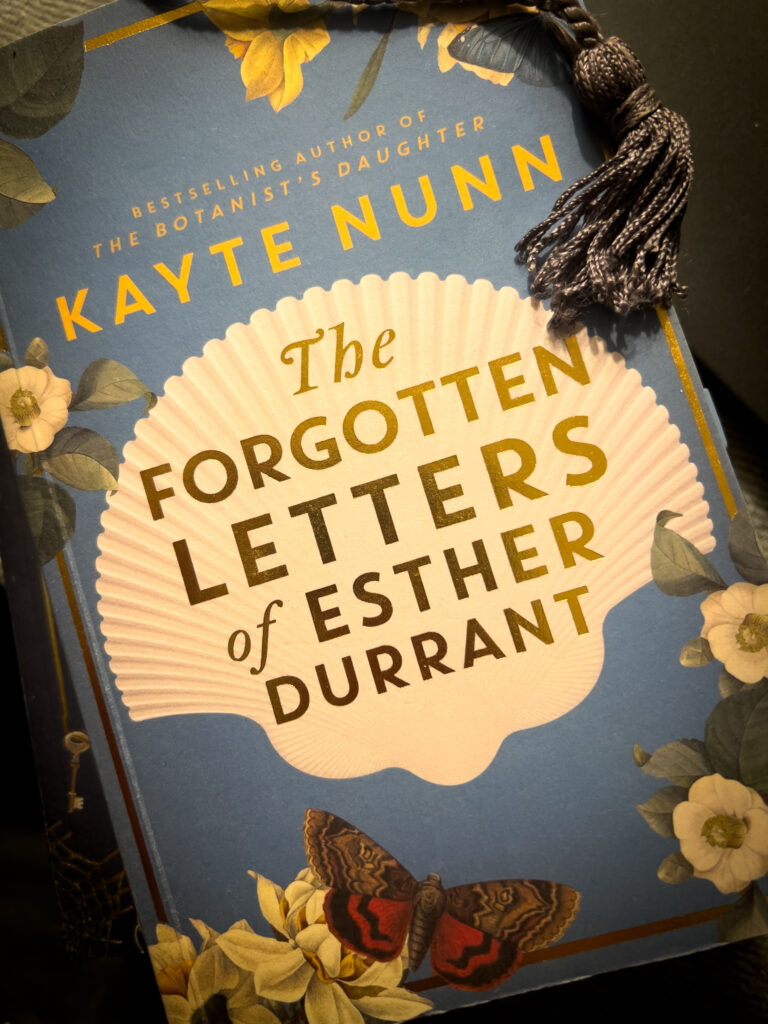‘How do you keep going on?’
by – Kayte Nunn
‘Beauty.’
‘Beauty?’ she echoed.
‘Even when it seems there is none to be had, you must seek it out. Find a way to dream again, to believe, believe in the beauty of life, however fleeting.’

Story Summary
The Forgotten Letters of Esther Durrant” by Kayte Nunn is a dual-timeline novel that interweaves the stories of Esther Durrant in 1951, and Rachel Parker, a marine scientist, in 2018.
In 1951, Esther Durrant, a young mother, was struggling with what is now known as postpartum depression. Her husband, believing she needs rest, takes her to a remote island off the English coast. However, Esther soon realizes that she has been committed to an isolated mental health facility run by Dr. Richard Creswell, who is pioneering treatment for shell-shocked soldiers. As Esther grapples with her mental health, she forms a bond with both the soldiers and Dr. Creswell, and through these relationships, she begins her journey toward healing.
Fast forward to 2018, Rachel Parker, the marine scientist, is researching on the same remote island and discovers a cache of unsent love letters hidden in a cliffside cottage. The letters, written by Esther to a lost love, open up the mysteries of Esther’s past. Intrigued by the letters and the story they hint at, Rachel attempts to uncover what happened to Esther and the man she wrote the letters to.
As Rachel delves deeper into Esther’s story, she confronts her emotional wounds, and the narratives of both women entwine, revealing themes of love, resilience, and the capacity for healing. The novel explores the effects of war on mental health, the historical treatment of women with mental health issues, and the power of love letters and storytelling in understanding the past and shaping the future.
Kayte Nunn’s novel is an evocative portrayal of two women, separated by time, whose journeys are interlaced with love, loss, and the rediscovery of self.
Review
The Forgotten Letters of Esther Durrant,” while an engaging dual-timeline narrative with promising themes of love and resilience, delivers a mixed reading experience, meriting a rating of 6 out of 10.
On the one hand, Kayte Nunn’s novel presents an atmospheric setting that beautifully juxtaposes the desolation of Esther Durrant’s 1951 mental health retreat with the wild and research-focused backdrop of Rachel Parker’s 2018 island. The story’s exploration of mental health issues from historical and modern perspectives is compelling, offering a glimpse into the stigmas and treatments of the past compared to today’s understanding. Furthermore, the discovery of unsent love letters weaves a tapestry of mystery and romance that holds promise.
However, the execution of these concepts sometimes falls flat. The pacing can be inconsistent, with certain portions dragging, making it difficult for readers to stay fully invested in the characters’ journeys. While Esther’s narrative feels more fleshed out and emotionally impactful, Rachel’s modern-day story often struggles to match the depth and intrigue of the historical plot, at times feeling like an add-on rather than an integral part of the story.
Additionally, readers may find the character development lacking complexity; there’s a sense that the protagonists and secondary characters could have been more fully explored to deepen the reader’s emotional connection with the story. The novel’s potential to profoundly handle subjects such as trauma, recovery, and personal evolution is somewhat undermined by predictable plot points and a resolution that may seem rushed, leaving a few questions unanswered and emotional arcs not fully satisfied.
The writing itself is accessible and descriptive, painting clear pictures of the settings and emotional landscapes. Nevertheless, it may not stand out for those seeking more evocative or poetic prose that often characterizes the most captivating historical fiction.
In summary, “The Forgotten Letters of Esther Durrant” has its strengths and will appeal to readers who enjoy light historical fiction with a dash of mystery and romance. The book brilliantly sets up a narrative rich with thematic potential but ultimately does not reach the heights it could have due to some shortcomings in character depth, pacing, and a fully satisfying conclusion. A perfect read for a quiet weekend, it’s a decent entry into the genre that many may enjoy, but it may not linger long in the memory or prompt deep reflection post-reading.
